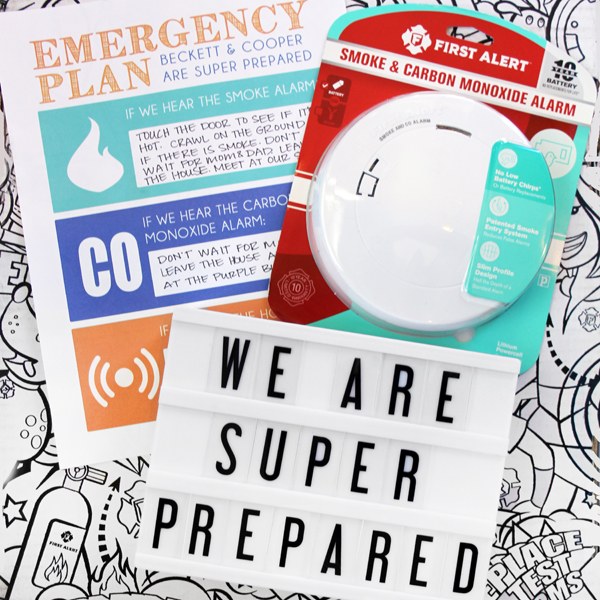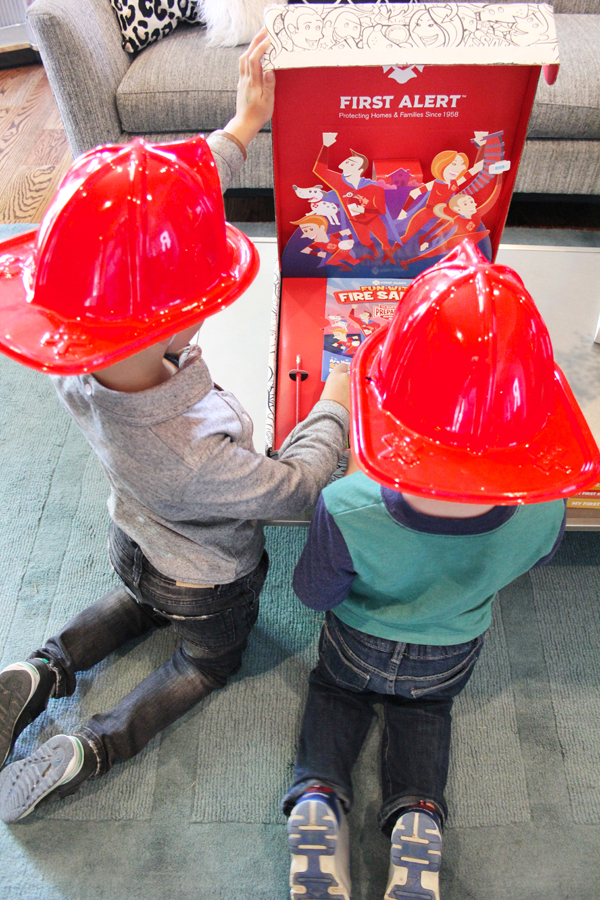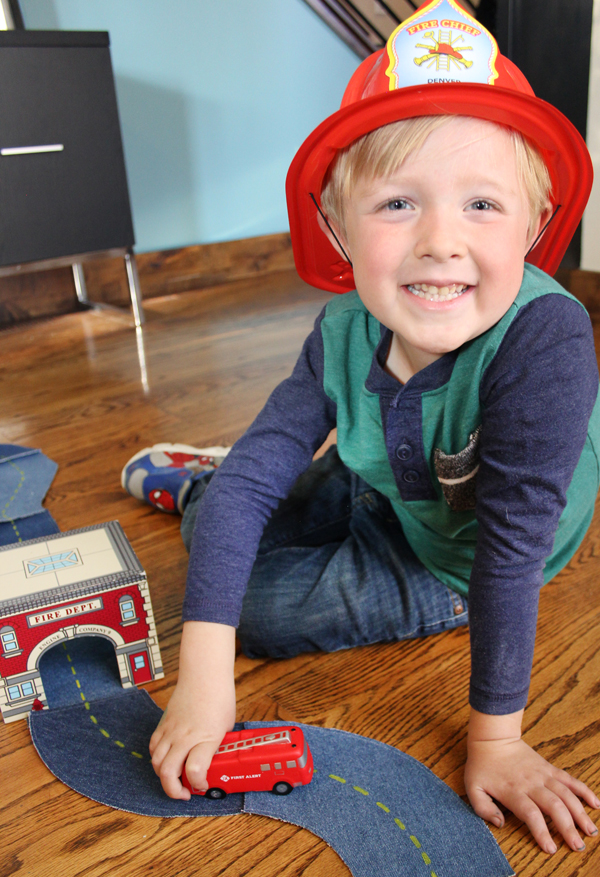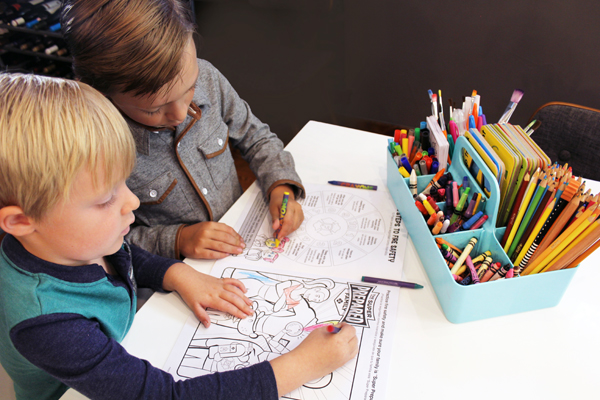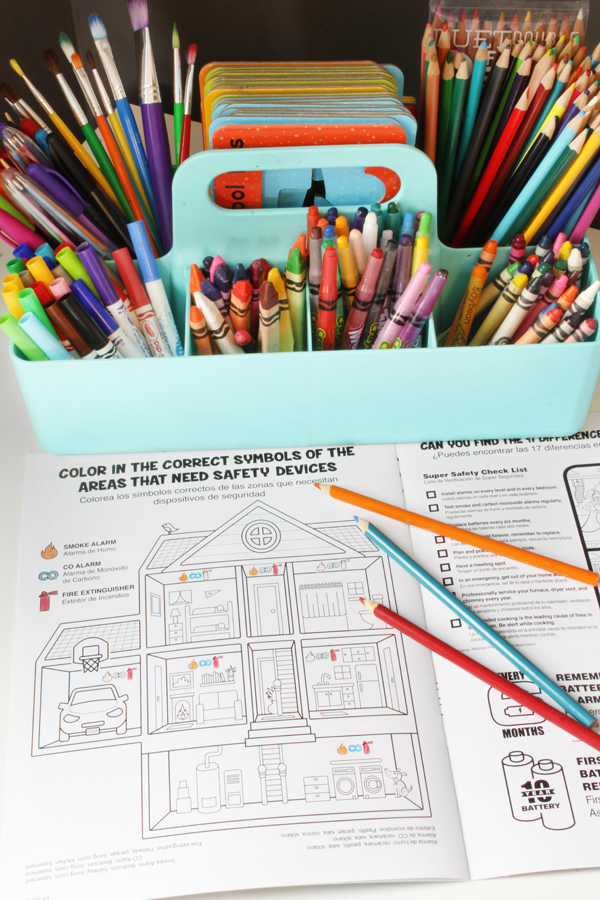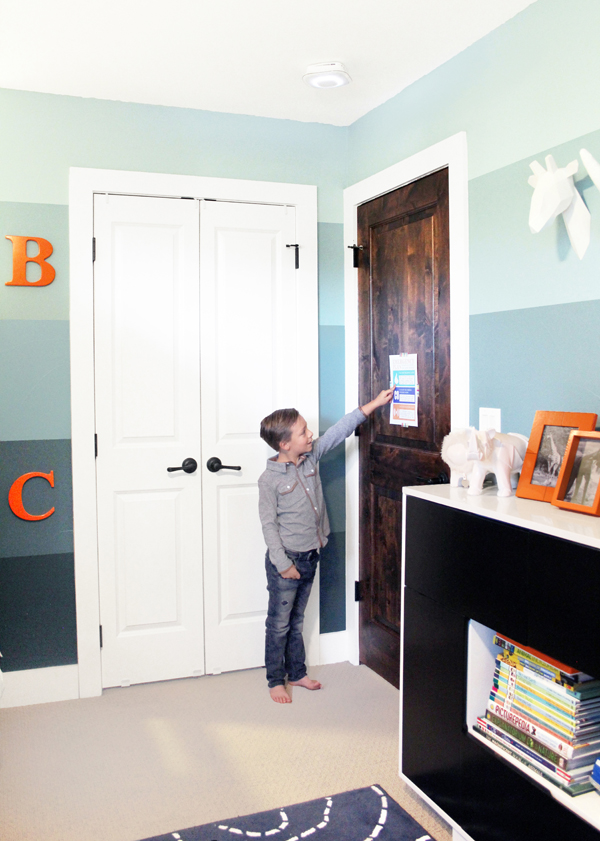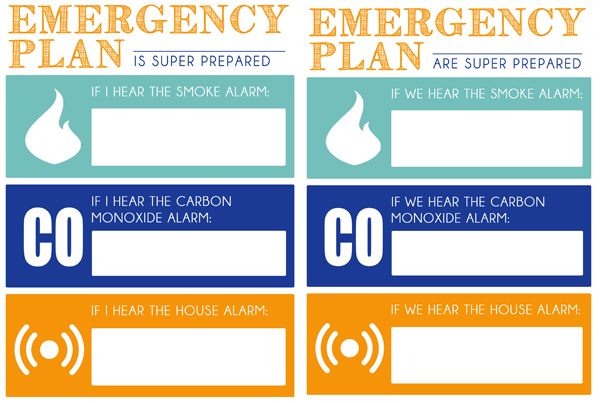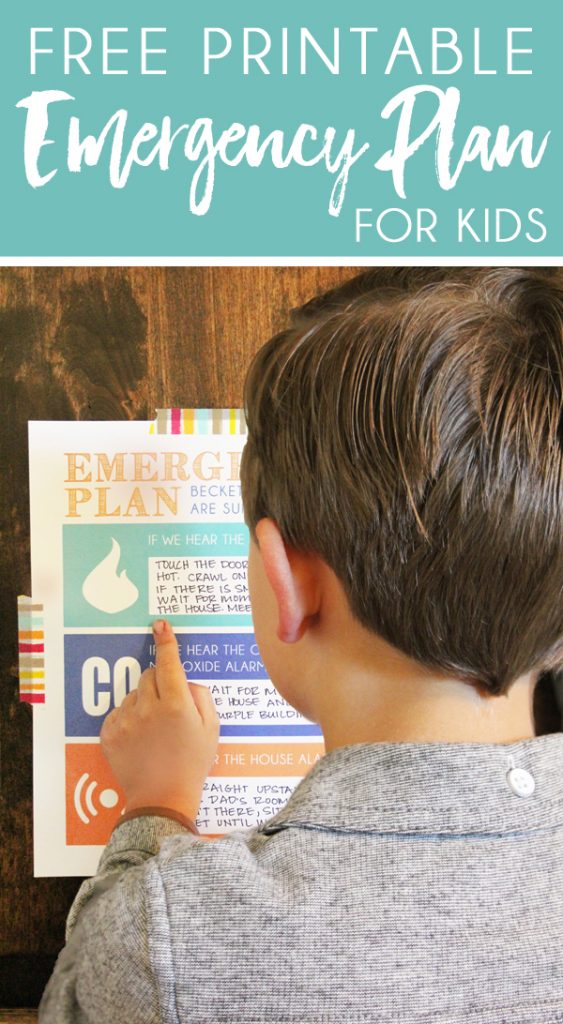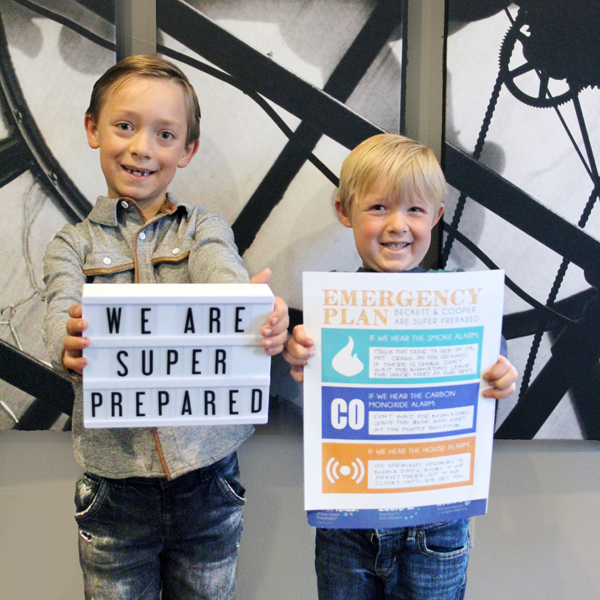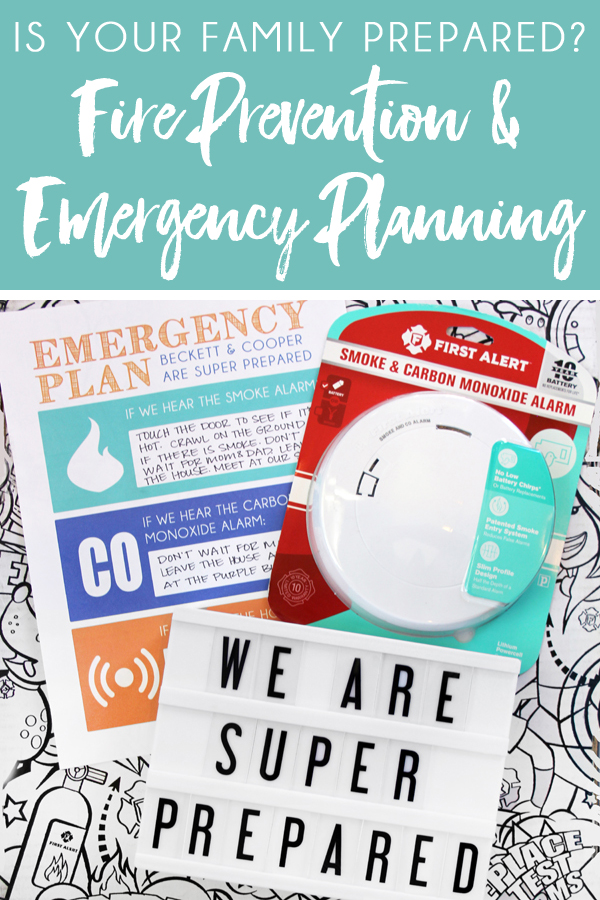Thank you First Alert for sponsoring this post. October is Fire Prevention Month – practice safety in numbers to ensure your family’s super prepared too!
HOUSE FIRE PREVENTION TIPS
- Never leave cooking unattended
- Never store cooking oil near the stove where it could overheat and ignite
- When cooking with oil, keep a pan lid and a container of baking soda near by to suffocate the flames if a fire were to start; never put water on a grease fire
- Make sure that combustible items, like dishtowels and pot holders, are a safe distance away from the cooking surfaces
- Ensure that the stove, oven, and all other heating elements are completely off before leaving the room
- Clean the dryer lint trap after each load, and clean out of the dryer vent twice a year
- Clean the chimney flue at the beginning of each fall
- Don’t store flammable liquids, like gasoline, cleaning agents, and paints, near a heating source; keep them in cool, ventilated areas
- Keep candles at least a foot away from anything that could ignite and never leave candles unattended
- Don’t let anything rest against a light bulb where it can overheat and ignite
- Keep stacks of clothes and linens on upper shelves should be kept away from closet light fixtures
- Don’t use lampshades that are too big for your lamp and could cause it to tip over, leaving the bulb resting against something flammable
- Keep lighters, candles and matches out of reach of children
- Use caution with real Christmas trees and make sure they get plenty of water, and if you opt for a fake tree, make sure it’s flame retardant
- Check your strings of Christmas lights to make sure there are no frays or broken bulbs that could have an exposed elements
- Don’t leave Christmas lights unattended
- Store piles of firewood well away from the house – if a fire starts nearby, these could easily become kindling
FAMILY FIRE SAFETY TIPS
Over 100 million homes in the US are not protected with smoke alarms, and 3 out of 5 home fire deaths occur in homes with no working smoke alarms. Additionally, carbon monoxide is the number one cause of accidental death, yet 40% of homes do not have a single CO alarm.
You might be thinking that you don’t need to worry because your house has smoke and CO alarms, but pause for a moment and ask yourself:
- Do you have enough smoke and carbon monoxide alarms and are they in the right places?
- When was the last time you replaced the batteries in your alarms?
- Do you have fire extinguishers, and do you know how to use them?
Taking inventory of your smoke alarms, CO alarms, and fire extinguishers is a great way to get the kid involved.
My kids used to be terrified of our smoke alarms and cried anytime we said we needed to test them. It makes sense – that sound is pretty loud and scary, and it forces you to imagine the possibility of a real fire. With our boys, we’ve tried to emphasize that smoke and CO alarms are our friends and work hard to keep us safe!
We recently installed a First Alert’s Onelink Safe & Sound smart smoke detector and carbon monoxide alarm in the boys’ room. The Onelink has an Alexa enabled speaker and a nightlight built in, so it immediately won the kids over. The kids really just love that they can ask it to play the music they want for their dance parties, but I rest easier knowing it keeps the kids safe. In the event of a fire or CO emergency, the Onelink sends push notifications directly mom and dad’s phones, and provides the kids with verbal directions to leave the house. This has been a game changer for us in terms of alleviate the kids’ fear. {Read all about our Onelink fire and CO alarm in this post.}
Now that the kids aren’t so scared of our alarms anymore, we wanted involve them in making sure our whole house is properly equipped. Our First Alert Fire Safety Kit came with a coloring and activity book full of information presented in a way the kids were drawn to {pardon the pun}. You can download the same printable fire safety activity pages for your kids.
After they colored the superheros and warmed up to the idea of talking more about fire safety, we turned to the page that showed all the places in the house that you should have smoke alarms, carbon monoxide alarms, and fire extinguishers. Then we walked around the house and the looked for alarms in all the right places.
Do the same with your family. Take a tour of your house and make sure that you have:
- At least one fire alarm on each floor, one in each bedroom, and one outside each sleeping area
- At least one carbon monoxide alarm on each floor of the home
- Always have at least one fire extinguisher in the kitchen, in the laundry room, and at least one on each floor of the home
Keep in mind that smoke and carbon monoxide alarms don’t last forever. Alarms need to be replaced every 5 to 10 years, depending on the model. And the batteries in your alarms need to be replaced twice a year. Replacing batteries each spring and fall with the time change is an easy way to remember. Or, better yet, eliminate the need to replace batteries by upgrading to First Alert’s 10-year sealed battery alarms.
Read more in this post: How to Protect Your Family From Carbon Monoxide
FAMILY FIRE SAFETY PLANNING
After talking with our boys about the steps we can take to prevent a house fire, and ensuring that our house is properly equipped with alarms, we were ready to make our family emergency plan.
Before we had kids, a lot of our parent friends warned us that having the master bedroom on a different floor than the kids rooms would be problematic someday. Thanks to video monitors that allow us to hear the kids if they need us, and our home security system that gives me peace of mind, having the master bedroom a floor above the kids has really never been an issue for our family.
However, there is one aspect of the distance between our bedrooms that does give me a bit of anxiety. If we were to have an emergency at night, will the kids remember what to do? What if I’m not able to get down the stairs to their room?
For years we’ve been talking about our family safety plan. We’ve told the kids that if they hear the security alarm at night, they should come directly upstairs to our bedroom, but if they hear the fire alarm or carbon monoxide alarm, they should leave the house and go straight to our designated family meeting place across the street.
We’ve made sure the kids know the different sounds of each alarm, and the OneLink in their room helps a lot since it verbally states if smoke or carbon monoxide are detected. We’ve even had a few drills. But I still worry that if there were a fire at night, the boys would be scared or confused and try to come upstairs to look for us rather than just getting out of the house to safety.
Now that Beckett is a strong reader, and Cooper is learning to read, we decided we should put our family emergency plan in writing and place it on the back of the boys’ bedroom door.
Fire safety should be a family affair, so be sure to get the kids involved. First Alert’s “Super Prepared Family” of superheros helped us start the conversation with our boys, and they have a ton of great online resources for kids. This video is a great introduction to the importance of fire safety:
I’d love to hear your tips, too! What else have you done to prevent fires and make sure your family is safe in the event of a fire or carbon monoxide emergency? Please share your tips in the comments.
I was selected for this opportunity as a member of CLEVER and the content and opinions expressed here are all my own.
